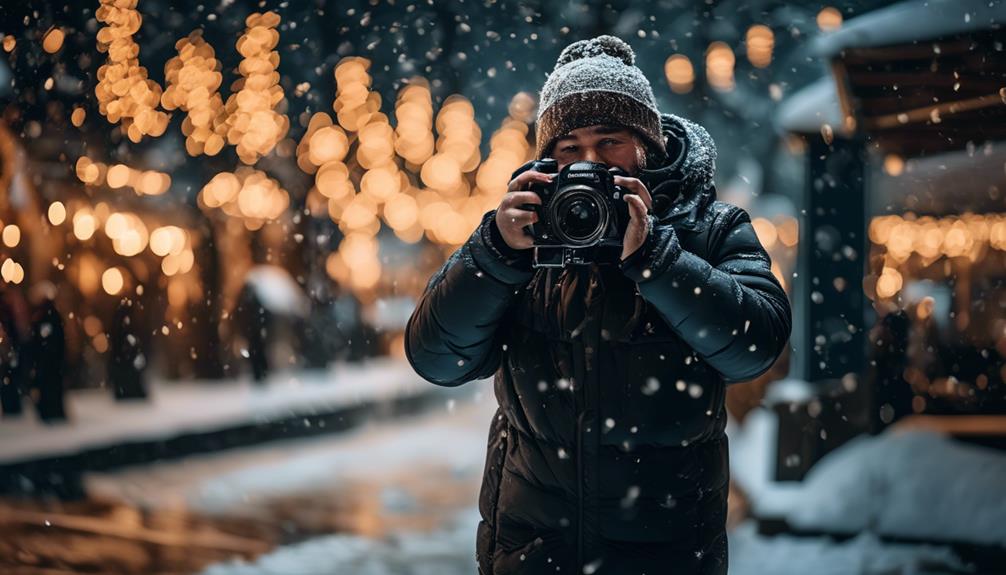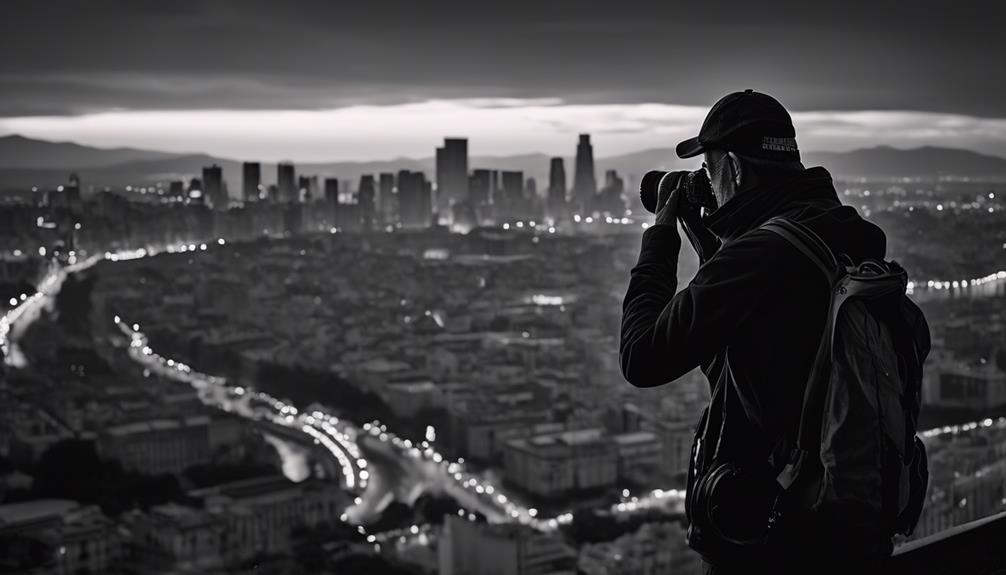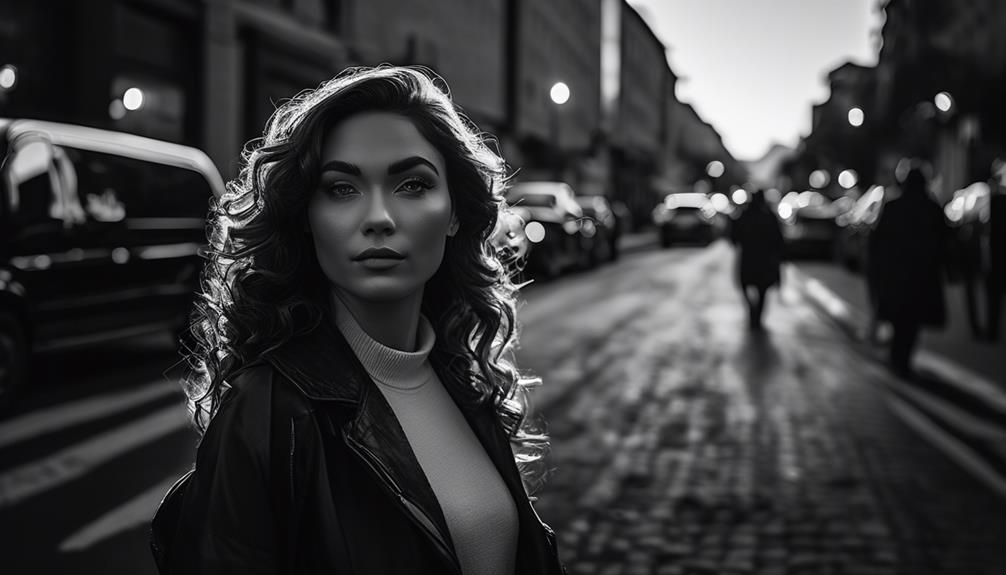Please note this post may contain affiliate links picked by me (Jay) that I have deemed may be of interest or relevant to you the reader of this.
These links do not affect the cost of the thing if you decide to purchase but i may get a little money if you choose to purchase.
For more information on my affiliate link policy click here.
Have you ever wondered how some photographers seem to effortlessly capture breathtaking landscapes, intimate portraits, bustling street scenes, and captivating wildlife moments?
The secret lies in their ability to diversify their skills across different genres of photography. In this discussion, I will explore the importance of mastering photography across various genres and how it can enhance your artistic vision, expand your technical abilities, and ultimately make you a more versatile and well-rounded photographer.
So, grab your camera and join me as we embark on a journey to discover the power of diversifying your photography skills.
Key Takeaways
- Diversifying your photography skills across different genres allows you to explore different techniques and perspectives.
- Each genre of photography presents its own unique challenges and requires specialized equipment and techniques.
- By mastering the technical aspects of photography in different genres, you can enhance your overall photography skills.
- Exploring different genres of photography can provide new opportunities for creativity and personal growth as a photographer.
Landscape Photography
When it comes to capturing the beauty of nature, landscape photography allows me to immerse myself in the captivating scenery and document it through the lens of my camera. As a photographer, I'm constantly seeking out new ways to innovate and push the boundaries of my craft.
One of the most exciting aspects of landscape photography is the opportunity to experiment with different techniques and genres, such as night photography and underwater photography.
Night photography adds a whole new dimension to capturing landscapes. The darkness of the night sky provides a canvas for breathtaking shots of stars, the moon, and even the elusive Milky Way. By using long exposure techniques and a tripod, I can capture the stunning contrast between the dark sky and the illuminated landscape below. The challenge lies in finding the perfect balance of light and darkness to create a visually striking image. It requires patience, skill, and a deep understanding of the technical aspects of photography.
On the other hand, underwater photography offers a unique perspective on landscape photography. Exploring the depths of the ocean allows me to document the beauty and diversity of underwater landscapes. Whether it's coral reefs, kelp forests, or marine life, the underwater world is a treasure trove of captivating scenes. It requires specialized equipment and techniques to capture the vibrant colors and ethereal atmosphere of underwater landscapes. The challenge lies in mastering the art of buoyancy control and composition while dealing with the unpredictable nature of underwater environments.
Portrait Photography
After exploring the captivating landscapes of nature, I turn my lens towards a whole new subject: portrait photography. The art of capturing people's expressions and personalities through the lens has always fascinated me. With portrait photography, I've the opportunity to create meaningful and impactful images that tell a story.
Here are some key aspects that I've discovered while delving into the world of portrait photography:
- Lighting techniques in portrait photography: Lighting plays a crucial role in setting the mood and highlighting the subject's features. Whether it's natural light, studio lighting, or using reflectors and diffusers, understanding how to manipulate light can take your portraits to the next level.
- Poses and expressions in portrait photography: Posing is an art form in itself. It involves guiding your subject to find the most flattering angles and positions. Additionally, capturing genuine expressions can bring life and emotion to your portraits. Experiment with different poses and encourage your subject to relax and be themselves.
- Composition and framing: Paying attention to the composition and framing of your portraits can greatly enhance their impact. Experiment with different compositions, such as the rule of thirds or leading lines, to create visually dynamic images.
- Connecting with your subject: Building a connection with your subject is essential for capturing authentic and compelling portraits. Take the time to communicate and understand their story, allowing them to feel comfortable and confident in front of the camera.
- Post-processing techniques: Post-processing can elevate your portraits by adding a personal touch and enhancing certain aspects. Experiment with different editing techniques, such as adjusting colors, contrast, and sharpening, to achieve the desired look.
Incorporating these elements into your portrait photography will help you create stunning and captivating images. So, grab your camera, find a willing subject, and let your creativity flow. The possibilities are endless in the world of portrait photography.
Street Photography
Exploring the vibrant streets of the city, I'm immersed in the dynamic world of street photography. The beauty of this genre lies in its ability to capture candid moments, freezing the essence of everyday life. It's a powerful medium that allows me to tell stories, document social issues, and celebrate cultural diversity.
Street photography is all about capturing the rawness and authenticity of our surroundings. It requires quick thinking, a keen eye, and the ability to anticipate and capture fleeting moments. Whether it's a child playing in a puddle, a musician lost in their own world, or a group of friends sharing a laugh, these candid moments are what make street photography so captivating.
But street photography goes beyond just capturing beautiful moments. It has the power to shed light on social issues and cultural diversity. Through my lens, I can bring attention to the untold stories of marginalized communities, challenge stereotypes, and provoke conversations. Street photography becomes a voice for those who mightn't have one, allowing their stories to be heard and understood.
Every street has its own unique energy, and as a street photographer, I strive to capture the essence of that energy. I search for interesting compositions, play with light and shadows, and look for the little details that make each street come alive. It's a constant adventure, a never-ending exploration of the world around me.
Innovation is at the heart of street photography. It pushes me to experiment with different techniques, perspectives, and styles. From black and white to vibrant colors, from wide-angle to telephoto lenses, there are endless possibilities to explore. Street photography challenges me to constantly evolve and see the world in new and exciting ways.
Wildlife Photography
Capturing the untamed beauty of wildlife through my lens is a thrilling and awe-inspiring adventure. Wildlife photography allows me to witness the wonders of nature up close and personal, documenting the fascinating behaviors and stunning appearances of diverse animal species.
Here are some key aspects of this genre that make it an exciting and innovative field to explore:
- Bird photography: Birds aren't only visually captivating but also possess unique behaviors. Capturing their graceful flight or intricate mating rituals requires patience and a keen eye for detail. Bird photography allows me to showcase the vibrancy and diversity of avian life.
- Animal behavior photography: Understanding animal behavior is crucial for capturing impactful wildlife images. By observing and anticipating their actions, I can document fascinating moments, such as a predator stalking its prey or a mother nurturing her young. This genre of photography offers a glimpse into the intricate dynamics of the animal kingdom.
- Environmental storytelling: Wildlife photography goes beyond capturing individual animals; it also tells stories about their habitats and the challenges they face. By documenting the interactions between wildlife and their environment, I can raise awareness about conservation and the need to protect these fragile ecosystems.
- Technical challenges: Wildlife photography presents unique technical challenges, requiring a combination of technical skills and creative vision. From mastering fast shutter speeds to freezing action, to understanding the use of telephoto lenses to capture distant subjects, this genre pushes me to continually innovate and find new ways to capture stunning images.
- Connection with nature: Immersing myself in the world of wildlife photography allows me to forge a deeper connection with nature. It enables me to appreciate the delicate balance of the natural world and the importance of preserving it for future generations.
Macro Photography
Continuing my journey through different genres of photography, I now find myself drawn to the captivating world of macro photography. Exploring this genre has opened my eyes to the incredible details and hidden beauty that exist in the smallest subjects. Macro photography allows me to capture the intricate patterns of a flower petal, the delicate texture of an insect's wing, or the mesmerizing structure of a water droplet.
To truly excel in macro photography, I have discovered the importance of mastering close-up techniques and using the right equipment. The table below highlights some essential techniques and equipment for macro photography:
| Close-up Techniques | Equipment for Macro Photography |
|---|---|
| Use a macro lens | Dedicated macro lens |
| Use a tripod | Extension tubes |
| Experiment with lighting | Macro filters |
| Master depth of field | Ring flash |
| Focus stacking | Reverse lens technique |
A dedicated macro lens is a must-have for capturing stunning close-up shots with sharp details. Additionally, using a tripod helps eliminate any camera shake and ensures maximum sharpness. Experimenting with different lighting techniques, such as using a ring flash or macro filters, can add creative flair to your macro images. Mastering depth of field and focus stacking techniques will also allow you to control the sharpness and depth in your macro photos.
Macro photography has given me a new perspective on the world around me. It has taught me patience, attention to detail, and the ability to see beauty in the smallest of subjects. By incorporating these close-up techniques and using the right equipment, I am constantly pushing the boundaries of what is possible in macro photography. Join me in this mesmerizing world and capture the hidden wonders that await.
Frequently Asked Questions
How Can I Incorporate Landscape Photography Techniques Into My Portrait Photography?
To incorporate landscape photography techniques into my portrait photography, I can start by using similar composition principles. By incorporating elements such as leading lines or framing techniques, I can create visually interesting portraits.
Additionally, I can experiment with different lighting styles inspired by landscapes, such as using natural light to create a soft, ethereal effect.
This blend of landscape and portrait techniques will add a unique and innovative touch to my photography.
What Are Some Common Challenges Faced by Street Photographers and How Can I Overcome Them?
When it comes to street photography, there are some common challenges that we all face. The fast-paced nature of the streets can make it difficult to capture the perfect shot. But fear not, for there are ways to overcome these obstacles and develop your street photography skills.
Are There Any Specific Camera Settings or Techniques That Are Essential for Wildlife Photography?
Camera settings and wildlife techniques are crucial for capturing stunning wildlife photographs. It's important to adjust your camera settings to achieve the desired depth of field, shutter speed, and ISO for different wildlife situations.
Techniques such as tracking the subject, using long lenses, and understanding animal behavior can greatly enhance your wildlife photography skills.
What Are the Key Differences Between Macro Photography and Close-Up Photography?
When it comes to photography, the key differences between macro photography and close-up photography lie in the subject matter and the scale of the image.
Macro photography focuses on capturing small objects or details with intricate precision, while close-up photography typically involves capturing larger subjects up close.
To achieve sharp focus in macro photography, I recommend using a tripod, adjusting your aperture for depth of field, and utilizing focus stacking techniques.
These tips will help you capture stunning close-up shots with clarity and detail.
How Can I Capture Unique and Creative Compositions in Wildlife Photography?
Capturing unique and creative compositions in wildlife photography is all about being in the right place at the right time. To add movement to your shots, try using a fast shutter speed to freeze the action or a slower speed to create motion blur.
Natural light is key in wildlife photography, so take advantage of the golden hours of sunrise and sunset for soft, warm lighting.
Remember, innovation comes from experimenting with different angles, perspectives, and techniques.
Happy shooting!
Conclusion
In conclusion, as I've explored the diverse genres of photography, I've discovered the power of capturing moments in stunning landscapes. The beauty and emotion of portraits have also captivated me, allowing me to convey a person's essence through the lens. Additionally, I've been drawn to the energy and stories of the streets, capturing the vibrant essence of urban life. The thrill of wildlife encounters has also been a highlight, as I've been able to document the majesty and wonder of animals in their natural habitats. Finally, I've developed a fascination for the intricate details in the tiny world of macro photography, revealing the beauty in the smallest of subjects.
With each genre, I've expanded my skills and opened myself up to new experiences, fueling my passion for photography. So, don't limit yourself to just one genre – dive into the wonderful world of photography and unlock your creative potential!


